The 2016 Colorado TU Annual Report is now available! This year we broke it down basin-by-basin to show that no matter where you fish, Colorado TU is on-the-ground working to make the watershed healthier, protect the lands and streams, and ensure that the fish habitat is sustainable for future generations.
 In the South Platte basin, Colorado TU and chapters worked to engage young, inner city, girls through the great outdoors by introducing them to fly fishing and conservation; CTU worked with Colorado Parks and Wildlife to reintroduce the Colorado state fish, Greenback Cutthroat Trout, to it's native watershed along the Front Range; Trout Unlimited tackled abandoned mine issues, and various chapters worked to repair their homewater streams from the devastating floods of 2013.
In the South Platte basin, Colorado TU and chapters worked to engage young, inner city, girls through the great outdoors by introducing them to fly fishing and conservation; CTU worked with Colorado Parks and Wildlife to reintroduce the Colorado state fish, Greenback Cutthroat Trout, to it's native watershed along the Front Range; Trout Unlimited tackled abandoned mine issues, and various chapters worked to repair their homewater streams from the devastating floods of 2013.
The Arkansas River basin is home to Bear Creek where the last wild population of Greenback Cutthroat trout were found. The Annual Report discusses how CTU and the local chapter worked to connect this rare fish with the community. The Arkansas River basin also included the Colorado TU Youth Camp where 15 students ages 14-18 were introduced to the basics of conservation and fly fishing.
The San Juan, Animas, and Dolores basins included work on restoring the trout habitat and cutthroat trout populations into Hermosa Creek, rerouting the San Miguel river through the Telluride Valley Floor, and protecting the southwest rivers and streams from hardrock mining issues.
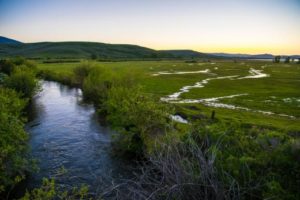 In the Colorado River basin, TU helped secure protections for the Roan Plateau and Thompson Divide from harmful oil and gas development, worked with local ranchers and farmers to improve the health of the Upper Colorado while enhancing agriculture water usage. TU also helped lead the Learning by Doing initiative that, among other things, secured $8 million in funds to protect and restore the Upper Colorado River.
In the Colorado River basin, TU helped secure protections for the Roan Plateau and Thompson Divide from harmful oil and gas development, worked with local ranchers and farmers to improve the health of the Upper Colorado while enhancing agriculture water usage. TU also helped lead the Learning by Doing initiative that, among other things, secured $8 million in funds to protect and restore the Upper Colorado River.
Along the Yampa, Trout Unlimited's Brian Hodge was rewarded the U.S. Forest Service’s Rise to the Future Award for his work restoring miles of streams and trout habitat in the Routt National Forest. The local chapter also worked to engage youth in the basin by connecting them to their local watershed and introducing them to the issues present.
The Gunnison River basin included engaging youth through the Adopt-a-Trout program in Tomichi Creek where students, in collaboration with local agencies, tagged wild trout to study the movements of fish in the creek. TU also worked with local farmers and ranchers to improve agriculture processes and trout habitat in the Gunnison valley.
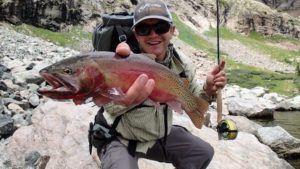 In the Rio Grande basin, Trout Unlimited worked to protect the Great Sand Dunes Cutthroat from potential changes in the environment. The Rocky Mountain Flyathlon came to Saguache for the annual race and fishing events that help raise money for Colorado TU's work in protecting native trout and their habitats. The local chapter and Trout Unlimited also worked to repair sections of the Conejos and ensure that winter flows were hospitable for trout.
In the Rio Grande basin, Trout Unlimited worked to protect the Great Sand Dunes Cutthroat from potential changes in the environment. The Rocky Mountain Flyathlon came to Saguache for the annual race and fishing events that help raise money for Colorado TU's work in protecting native trout and their habitats. The local chapter and Trout Unlimited also worked to repair sections of the Conejos and ensure that winter flows were hospitable for trout.
The work we accomplished last year could not have been done without the generous support of our donors and partners listed on page 23 of the Annual Report. All donations to Colorado TU are leveraged through corporate partnerships, volunteer sweat equity, and matching grants to make your dollars go even further!
There are many more stories in each basin and projects from around the state that you can read in the 2016 Annual Report. You can view the report here or make sure you check it out in the Spring edition of High Country Angler!






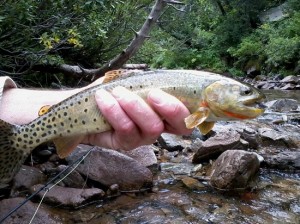 There is a small but dangerous movement brewing in this country that would transfer ownership of federal public lands to the states. TU and many other
There is a small but dangerous movement brewing in this country that would transfer ownership of federal public lands to the states. TU and many other 
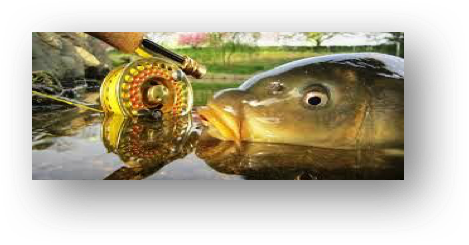 Typical targets in fly fishing are common carp and grass carp. The habitat of carp is varied and they are found in a wide variety of waters all across the United States. Most typically, they’ll be found on flat areas, such as in Lake Michigan, in slow and slack water in creeks, streams and rivers, and in just about any lake you come across.
Typical targets in fly fishing are common carp and grass carp. The habitat of carp is varied and they are found in a wide variety of waters all across the United States. Most typically, they’ll be found on flat areas, such as in Lake Michigan, in slow and slack water in creeks, streams and rivers, and in just about any lake you come across.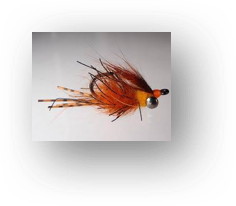 Flies
Flies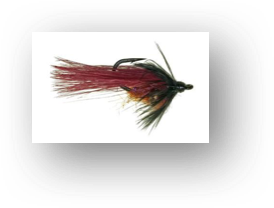 Plant material-they like fluffy cottonseeds and love mulberries, so flies that look like those two foods work
Plant material-they like fluffy cottonseeds and love mulberries, so flies that look like those two foods work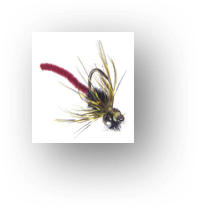 Some popular concepts: weighted flies that sink, hook point up, flies with legs that stir up mud or silt
Some popular concepts: weighted flies that sink, hook point up, flies with legs that stir up mud or silt
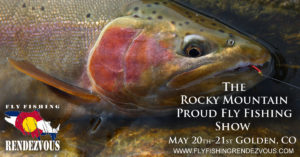 Born from a passion to make the sport of fly fishing accessible to all, and to equip Rocky Mountain anglers with the knowledge and gear needed to experience greater success on the water, the Fly Fishing Rendezvous has become the fastest growing and most eagerly anticipated fly fishing show in the Rockies. Featuring only the region’s best fly fishing companies, fly tyers, authors, and guides, the Fly Fishing Rendezvous focuses exclusively on local waters and local companies, and equips anglers with local knowledge for success on our waters. With its emphasis on educating anglers, the Fly Fishing Rendezvous has broken the mold of other fly fishing shows by giving participants access to more than 30 hours of classes with fly fishing’s best recognized authors, fly tyers, casting instructors, and fly fishing geeks. The topics of these classes are as diverse as the waters of our region: How to Fish Colorado’s Technical Tailwaters, How to Match the Hatch and Hack Hatch Charts, How to Sight Fish Trophy Trout on the Taylor River, as well as fly tying demonstrations with the industry’s best tyers. In addition to accessing an impressive line-up of classes, participants of the rendezvous will have the ability to interact with and buy gear or trips from more than 30 Rocky Mountain fly fishing companies. Whether it’s a new fly reel from Ross, waders from Simms, $10 dozens on flies from Ascent Fly Fishing, or a guided trip on private water, there will be something for every fly fisher at this show!
Born from a passion to make the sport of fly fishing accessible to all, and to equip Rocky Mountain anglers with the knowledge and gear needed to experience greater success on the water, the Fly Fishing Rendezvous has become the fastest growing and most eagerly anticipated fly fishing show in the Rockies. Featuring only the region’s best fly fishing companies, fly tyers, authors, and guides, the Fly Fishing Rendezvous focuses exclusively on local waters and local companies, and equips anglers with local knowledge for success on our waters. With its emphasis on educating anglers, the Fly Fishing Rendezvous has broken the mold of other fly fishing shows by giving participants access to more than 30 hours of classes with fly fishing’s best recognized authors, fly tyers, casting instructors, and fly fishing geeks. The topics of these classes are as diverse as the waters of our region: How to Fish Colorado’s Technical Tailwaters, How to Match the Hatch and Hack Hatch Charts, How to Sight Fish Trophy Trout on the Taylor River, as well as fly tying demonstrations with the industry’s best tyers. In addition to accessing an impressive line-up of classes, participants of the rendezvous will have the ability to interact with and buy gear or trips from more than 30 Rocky Mountain fly fishing companies. Whether it’s a new fly reel from Ross, waders from Simms, $10 dozens on flies from Ascent Fly Fishing, or a guided trip on private water, there will be something for every fly fisher at this show! TU staff along with Grand County and a number of environmental organizations discouraged the leasing of these parcels that were close to both the Colorado River and Rocky Mountain National Park. These areas also contained cutthroat trout habitat. TU and partners commented on the potential impact to the wildlife resources and recreation in the area to the BLM throughout the NEPA process. The other organizations who commented on these potential leases played a large role in the removal of these parcels, but the sportsmen’s perspective that TU provides seemed to be especially influential in many of these efforts.
TU staff along with Grand County and a number of environmental organizations discouraged the leasing of these parcels that were close to both the Colorado River and Rocky Mountain National Park. These areas also contained cutthroat trout habitat. TU and partners commented on the potential impact to the wildlife resources and recreation in the area to the BLM throughout the NEPA process. The other organizations who commented on these potential leases played a large role in the removal of these parcels, but the sportsmen’s perspective that TU provides seemed to be especially influential in many of these efforts. We have done several activities at our local chapter level since my short involvement. Projects include river restoration, replanting of vegetation, supporting youth in fly fishing activities, youth fly fishing camps, etc. I think one of the most important activities that our chapter has supported is youth education and river conservation, fly fishing and fly tying. I helped recruit Bennett Colvin, who is a middle school teacher with years of fly fishing experience and assisting youth in the program. He has done a tremendous job here locally as our chapter's Youth Coordinator. He has organized week-long youth fly fishing conversation and education camps here locally. He has a strong following of middle school students that show up to tie flies in the morning before school starts. Bennett is really our “Shining Star”.
We have done several activities at our local chapter level since my short involvement. Projects include river restoration, replanting of vegetation, supporting youth in fly fishing activities, youth fly fishing camps, etc. I think one of the most important activities that our chapter has supported is youth education and river conservation, fly fishing and fly tying. I helped recruit Bennett Colvin, who is a middle school teacher with years of fly fishing experience and assisting youth in the program. He has done a tremendous job here locally as our chapter's Youth Coordinator. He has organized week-long youth fly fishing conversation and education camps here locally. He has a strong following of middle school students that show up to tie flies in the morning before school starts. Bennett is really our “Shining Star”. I would like to think that my being involved in our chapters activities is making a difference. I hope that my small part supporting our chapter will continue a tradition of common love for our river system as well as promote continued preservation of rivers, streams and lakes around Steamboat Springs.
I would like to think that my being involved in our chapters activities is making a difference. I hope that my small part supporting our chapter will continue a tradition of common love for our river system as well as promote continued preservation of rivers, streams and lakes around Steamboat Springs. Included in the presentations from National TU Staff was the keynote speaker at the Saturday Night Banquet, TU President and CEO, Chris Wood. Wood spoke about the future of TU in the midst of an uncertain political climate. Wood reassured everyone that TU will continue to not only defend our prized fisheries and public lands but go on the offense and fight for protections of areas. We will also make sure we are working for our trout and salmon as opposed to working party lines.
Included in the presentations from National TU Staff was the keynote speaker at the Saturday Night Banquet, TU President and CEO, Chris Wood. Wood spoke about the future of TU in the midst of an uncertain political climate. Wood reassured everyone that TU will continue to not only defend our prized fisheries and public lands but go on the offense and fight for protections of areas. We will also make sure we are working for our trout and salmon as opposed to working party lines. The banquet also included the presentation of chapter, volunteer leadership, and partner awards. The awards included:
The banquet also included the presentation of chapter, volunteer leadership, and partner awards. The awards included: The weekend started off with the a Cast N' Sip event where guests were treated to a "Seven Deadly Sins of Casting" presentation by Johnathan Walters. Afterwards everyone could apply their newfound knowledge and participate in casting games like tic-tac-toe. Beer was provided for the event by
The weekend started off with the a Cast N' Sip event where guests were treated to a "Seven Deadly Sins of Casting" presentation by Johnathan Walters. Afterwards everyone could apply their newfound knowledge and participate in casting games like tic-tac-toe. Beer was provided for the event by 

